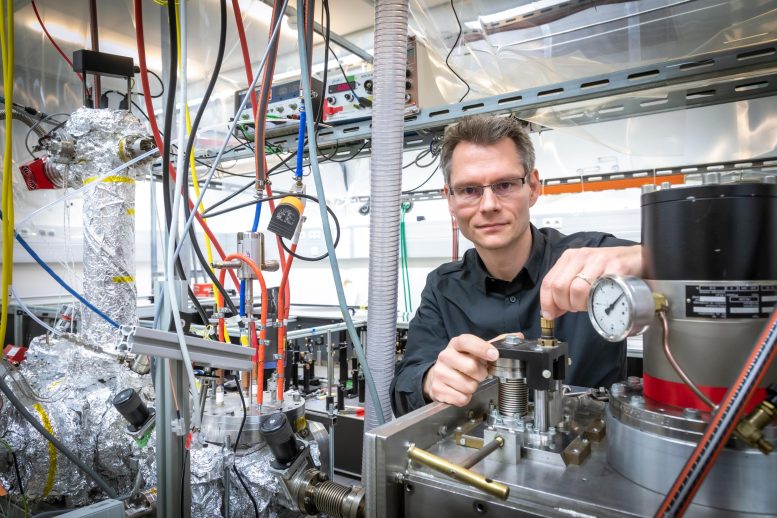
A new method uses helium droplets combined with ultrashort laser pulses to trigger chemical reactions in a controlled way. This approach offers new insights into how energy and charge are transferred during the formation of chemical bonds.
For the first time, a research team led by Markus Koch from the Institute of Experimental Physics at Graz University of Technology (TU Graz) has observed, in real time, how individual atoms come together to form a cluster and what processes are involved. To do this, the team first isolated magnesium atoms using superfluid helium and then used a laser pulse to initiate the formation.
The researchers tracked the clustering process and the energy transfer between atoms with a time resolution in the femtosecond range (1 femtosecond equals 1 quadrillionth of a second). Their findings were recently published in the journal Communications Chemistry.
“Nano-refrigerator” brings atoms into the starting position
“Normally, magnesium atoms instantaneously form tight bonds, which means that there is no defined starting configuration for observation of the bond-formation processes,” explains Markus Koch. To overcome this challenge—common in real-time observation of chemical reactions—the researchers used superfluid helium droplets in their experiments.
These droplets function like ultra-cold “nano-fridges,” isolating individual magnesium atoms at extremely low temperatures of 0.4 Kelvin (equal to -272.75 degrees Celsius or just 0.4 degrees above absolute zero) and keeping them about a millionth of a millimeter apart. “This configuration allowed us to initiate cluster formation with a laser pulse and track it precisely in real time,” says Michael Stadlhofer, who performed the experiments during his doctoral research.
Femtosecond spectroscopy makes chemical processes visible
The researchers used photoelectron and photoion spectroscopy to observe the processes triggered by the laser pulse. As the magnesium atoms joined to form a cluster, a second laser pulse ionized them. By analyzing the resulting ions and released electrons, Markus Koch and his team were able to reconstruct the sequence of events in detail.

Atoms pool their energy
A key discovery here is energy pooling. As they bind to each other, several magnesium atoms transfer the excitation energy received from the first laser pulse to a single atom in the cluster, so that it reaches a much higher energy state. This is the first time that energy pooling has been demonstrated with time resolution.
Basic research with application potential
“We hope that this atomic separation inside helium droplets will also work for a larger class of elements and thus become a generally applicable method in basic research,” says Markus Koch. “In addition, the findings on energy pooling could be relevant for energy-transfer processes in various areas of application, for example in photomedicine or in the utilization of solar energy.”
Reference: “Real-time tracking of energy flow in cluster formation” by Michael Stadlhofer, Bernhard Thaler, Pascal Heim, Josef Tiggesbäumker and Markus Koch, 29 May 2025, Communications Chemistry.
DOI: 10.1038/s42004-025-01563-6
Funding: Austrian Science Fund, Deutsche Forschungsgemeinschaft, Deutsche Forschungsgemeinschaft, Austrian Academy of Sciences
Never miss a breakthrough: Join the SciTechDaily newsletter.